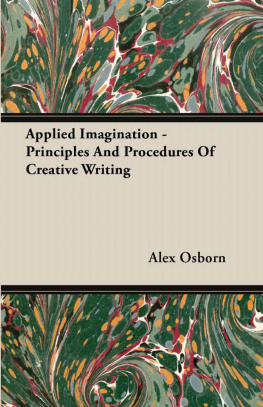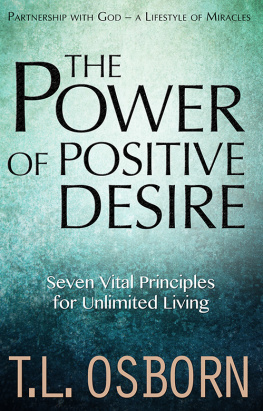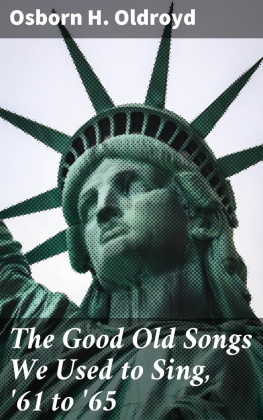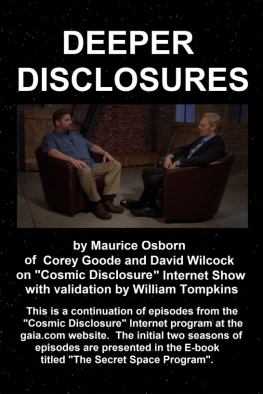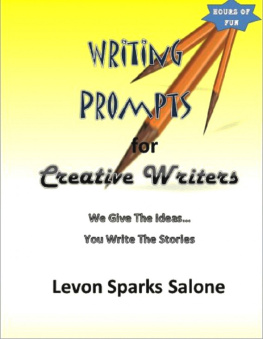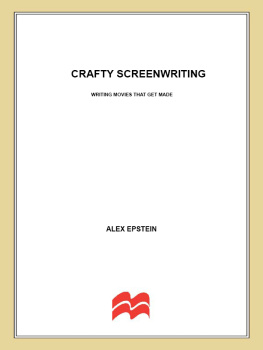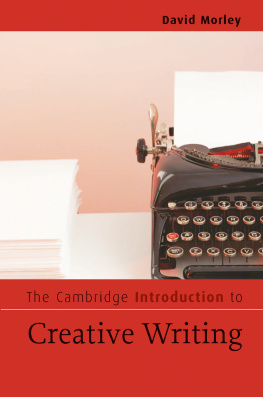Alex Osborn - Applied Imagination - Principles and Procedures of Creative Writing
Here you can read online Alex Osborn - Applied Imagination - Principles and Procedures of Creative Writing full text of the book (entire story) in english for free. Download pdf and epub, get meaning, cover and reviews about this ebook. year: 2013, publisher: Read Books Ltd., genre: Romance novel. Description of the work, (preface) as well as reviews are available. Best literature library LitArk.com created for fans of good reading and offers a wide selection of genres:
Romance novel
Science fiction
Adventure
Detective
Science
History
Home and family
Prose
Art
Politics
Computer
Non-fiction
Religion
Business
Children
Humor
Choose a favorite category and find really read worthwhile books. Enjoy immersion in the world of imagination, feel the emotions of the characters or learn something new for yourself, make an fascinating discovery.
- Book:Applied Imagination - Principles and Procedures of Creative Writing
- Author:
- Publisher:Read Books Ltd.
- Genre:
- Year:2013
- Rating:3 / 5
- Favourites:Add to favourites
- Your mark:
- 60
- 1
- 2
- 3
- 4
- 5
Applied Imagination - Principles and Procedures of Creative Writing: summary, description and annotation
We offer to read an annotation, description, summary or preface (depends on what the author of the book "Applied Imagination - Principles and Procedures of Creative Writing" wrote himself). If you haven't found the necessary information about the book — write in the comments, we will try to find it.
Alex Osborn: author's other books
Who wrote Applied Imagination - Principles and Procedures of Creative Writing? Find out the surname, the name of the author of the book and a list of all author's works by series.
Applied Imagination - Principles and Procedures of Creative Writing — read online for free the complete book (whole text) full work
Below is the text of the book, divided by pages. System saving the place of the last page read, allows you to conveniently read the book "Applied Imagination - Principles and Procedures of Creative Writing" online for free, without having to search again every time where you left off. Put a bookmark, and you can go to the page where you finished reading at any time.
Font size:
Interval:
Bookmark:
APPLIED IMAGINATION
PRINCIPLES AND PROCEDURES OF CREATIVE THINKING
By
ALEX F. OSBORN, P H .M.
Dedicated to
THE CHANCELLOR OF THE UNIVERSITY OF BUFFALO
D R . T. R AYMOND M C C ONNELL
of whom I am proud to be a colleague
A. F. O.
Preface
T HE PURPOSE of this book is to present the principles and procedures of creative thinking. The need for such a text has long been recognized educationally, since all agree that intelligent imaginative thinking is of paramount importance.
This book presents workable methods which utilize what is known about the creative imagination. The principles and procedures set forth are in no way revolutionary; they have been known and used by creative thinkers, both artists and scientists, for many centuries.
The revolutionary aspect, if such there is, is the effect of a formal and systematized approach to a fuller utilization of the creative imagination. The primary function of this book is to enable the student the better to understand and to apply his own innate creativity to all aspects of his personal and vocational life.
All human beings, to a greater or lesser degree, possess the imaginative faculty. Whether this talent can be enlarged by training is questionable. The point is that the student can be trained to use more productively the talent which he innately possesses. This training is subject to disciplines similar to those applicable to the mastery of any subject. Incidentally, creative imagination is itself a basic tool in the acquisition of knowledge; for, knowledge becomes more usable when imaginatively synthesized and dynamically extended.
The history of civilization is essentially the record of mans creative ability. Imagination is the cornerstone of human endeavor; it is, without doubt, responsible for mans survival as an animal, and it has caused him, as a human being, to conquer the world. It may well lead him to subdue the universe. The harnessing of atomic energy is a recent spectacular triumph of the human imagination over almost insuperable odds. Modern society, with its emphasis upon the progressive synthesis of technological and pure science, is admittedly dependent upon imagination as its life-blood. It is axiomatic that to think intelligently is to think creatively.
An academic authority has asked this question, Even though students may learn a lot about creativity, can they thus actually help themselves to become more creative? A definite yes is the answer of those who have specialized in creative pursuits. When it comes to developing specific skills of the mind, the value of training is fairly provable. Adults, for example, by practicing mental arithmetic for 20 minutes a day for 20 days, have more than doubled their ability to calculate. While mathematics is perhaps more teachable than creativity, it is obvious that imaginative ability can be improved through practiceenough, certainly, to justify the time a student might devote to that end.
The most profound study of creativity ever undertaken is the Federally financed project which has been conducted for the last four years at the University of Southern California under the direction of Dr. J. P. Guilford. In a recent summary of findings, Dr. Guilford concluded:
Like most behavior, creativity probably represents to some extent many learned skills. There may be limitations set on these skills by heredity, but I am convinced that, through learning, one can extend the skills within those limitations. The least we can do is to remove the blocks that are often in the way.
One of those blocks is student unawareness of the fact that everyone is gifted with a creative potential. Other blocks include lack of understanding of how creativity works, and failure to realize that all of us can keep ourselves from becoming less creative, and can do much to make ourselves more creative.
Is creativity too inexact to teach? Surely this subject can qualify under the broad definition of scientia as organized knowlledgeas opposed to the narrower definition of science as numerically organized knowledge. As an art, applied imagination is of the same empirical character as music, painting, writing, speaking, philosophy, ethics, religion and other such subjects which are offered by many colleges and universities, and rightly so.
Is there enough substance to teach? Admittedly all too little is known about creativity; but why shouldnt students be exposed to the amount that is known? We are still somewhat in the dark about colds, cancer, and polio; yet these diseases are not excluded from medical education.
Known facts and tentative theories about creative imagination provide plenty of teachable substance. The principles are fairly clear. Some techniques, although unprecise, are workable. But even greater than such pedagogical material is the limitless subjective substance. For if and when a student is introduced to his own creative power, he will find his own mind an ever-widening source of self-revelation.
Let us suppose, said Professor Harry Overstreet, that creative power is possessed by everybody; and that there are ways of stimulating and of training it which are capable of increasing it far beyond its latent condition. Education would be revolutionized. Its major energies would be directed toward the arousing and training of the inventive powers. A society alive with inventive power would, on the whole, be the most powerfully progressive society.
Although we cannot count on education to prepare our minds for every demand of later years, a higher order of resourcefulness would enable us to live better with ourselves and with others. Nothing can brighten our lives as much as a well-directed imagination. Then, too, education in creativity could help compensate for our loss of those environmental influences which formerly forced us to develop our imaginations. Thus it could help preserve our nation. Our very destiny may involve a race between education and our ability to keep ahead creatively.
The challenge confronts us as educators, said Dr. Paul Eaton, to develop ingenuity, initiative, and resourcefulness. This challenge becomes the more important when we are brought to the realization that the economic supremacy of our country may soon rest upon the creative ability of our citizens rather than upon the rich natural resources we once possessed.
My experience with experimental courses in creativity has convinced me that lesson-learning should be subordinated to problem-solving, so that the students will learn by doing. For that reason, each chapter in this book carries a list of suggested Exercises, as well as Topics. Although the latter will help in lesson-learning, the students will probably profit far more from whatever exercises are assigned in and out of class.
It would take too much space to acknowledge properly and to express my deep gratitude to the many people who have in one way or another helped make this book possible. I should like, however, to mention particularly my indebtedness to DeWitt Wallace, Editor and Publisher of The Readers Digest , who, 14 years ago, started me on my major interest in creativity; to Bruce Barton, my partner for 34 years, who has done much to clarify my thinking on this subject; and to Dr. Harry W. Hepner, of Syracuse University, who has guided me in the preparation of this volume, and of the accompanying Manual of Instruction.
A LEX F. O SBORN
Contents
CHAPTER I
The all-importance of imagination
T HE FACT that imagination is the pristine power of the human mind has long been recognized by the greatest thinkers. They have concurred in Shakespeares conclusion that this divine spark is what makes man the paragon of animals.
Civilization, itself, is the product of creative thinking. As to what ideas have meant in the forward march of mankind, John Masefield wrote: Mans body is faulty, his mind untrustworthy, but his imagination has made him remarkable. In some centuries, his imagination has made life on this planet an intense practice of all the lovelier energies.
Next pageFont size:
Interval:
Bookmark:
Similar books «Applied Imagination - Principles and Procedures of Creative Writing»
Look at similar books to Applied Imagination - Principles and Procedures of Creative Writing. We have selected literature similar in name and meaning in the hope of providing readers with more options to find new, interesting, not yet read works.
Discussion, reviews of the book Applied Imagination - Principles and Procedures of Creative Writing and just readers' own opinions. Leave your comments, write what you think about the work, its meaning or the main characters. Specify what exactly you liked and what you didn't like, and why you think so.

